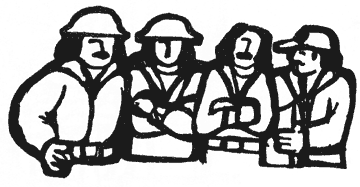|
Methodology
and technical specifications
1. Photodocumentation:
My previous practice was to use a Nikon 35mm camera with a Micro-Nikkor
60mm flat-field lens, shooting Kodachrome 25, the archival standard for
fine resolution and image stability. Slides were then scanned using a
dedicated slide scanner.
I
have now switched to digital capture for three reasons: Kodak has
discontinued sale of this film, processing has become more difficult,
and high-resolution digital cameras have come down in price to the
point that they are a practical choice. My first archival-quality
digital camera was a Kodak DCS Pro SLR-n, which shot 13-megapixel
images (3000 x 4500 pixels) and was quite satisfactory for most needs.
However, as the MOA standards moved up in scale, I found myself
requiring larger files. In 2009 I upgraded a
Sony Alpha 900 24-megapixel SLR and a Sigma 50mm F 2.8 DG macro lens, which shoots 36 MB RAW files that
convert to 60 MB tiffs (6048x4032 pixels).
Shots
go directly to a laptop, allowing for complete color balance control
and designated sequential file numbering. The posters are held in place
on a wall-mounted 3'x4' custom-built vacuum board,
assuring flatness without damaging the posters. Lighting is provided by
a pair of Lumedyne 200 watt-second electronic strobe units placed 45°
to the copyboard. A strobe meter is used to assure even light balance
over the image area. A standard color bar
and grayscale accompany each shot. The original RAW format files are
saved on CD, then cropped TIFFs are generated for catalog use. The
resultant files are always equal to or larger than 3000 pixels (and in practice are usually in the 5000 pixel range) along the longest edge (MOA
II guidelines).
Video of shooting and numbering posters from the AOUON collection before going to OMCA, 2010.
2. Image management: Scanned
images were dropped into Extensis Portfolio, a commercial application
for cataloging and retrieval. Search fields were set up for the
electronic catalog, including artist, date, agency, original catalog
number, new catalog number, medium, size, description, caption,
condition, and source. Portfolio dropped their wonderful stand-alone
version, so I've migrated to Photo Supreme for cataloging.
Helpful tips:
Adding metadata to digital files
Adding metadata to photos without Photoshop:
1. Touch on the image
2. Right click, go down to “Properties”
3. In top menu bar select “Details”
4. Touch on “Subject,” start typing
Adding metadata to PDFs:
1. Open PDF
2. Go to “File Properties”
3. Add information in Subject line, go to bottom and click “OK”
|

